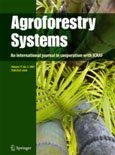Agroforestry is important for forest management and rehabilitation in the southeast Asia-Pacific Region (APR), where economic issues, intensive land use, deforestation, and forest degradation are common. Species selection is a key process in establishing agroforestry systems. In this study, we reviewed the agroforestry literature across eight economies within the southeast APR, documented the species used, and compared the existing systems to better understand the challenges and opportunities for the region’s agroforestry expansion. We conducted rule and Maptree analyses using 108 species, belonging to 95 genera and 49 families of plants, to unravel the various agroforestry practices in this region. We identified the most common plant families used in agroforestry combinations within each economy. We then divided the economies into three groups based on the most commonly used genera: (1) Thailand, Vietnam, Papua New Guinea and Fiji (Hevea, Oryza, Eucalyptus, Acacia, and Zea); (2) Nepal and Yunnan China (Zea, Leucaena, Morus, and Hevea); and (3) Indonesia and the Philippines (Oryza, Hevea, Zea, and Brassica). Although this study focused on high-level taxonomic classification (family and genus), we believe that this work will fill the current knowledge gaps, offering guidance to economies in the southeast APR regarding species selection and the adoption of sustainable agroforestry practices.
DOI:
https://doi.org/10.3390/f14102045
Altmetric score:
Dimensions Citation Count:

Publication year
2023
Authors
Zhang, W.; Su, K.; Wang, Q.; Yang, L.; Sun, W.; Ranjitkar, S.; Shen, L.; Kindt, R.; Ji, Y.; Marshall, P.; Pisey, P.S.; El-Kassaby, Y.A.
Language
English
Keywords
agroforestry, forest rehabilitation, species selection, forest management
Geographic
Cambodia, China, Fiji, Indonesia, Lao People's Democratic Republic, Malaysia, Myanmar, Nepal, Philippines, Papua New Guinea, Thailand, Viet Nam























